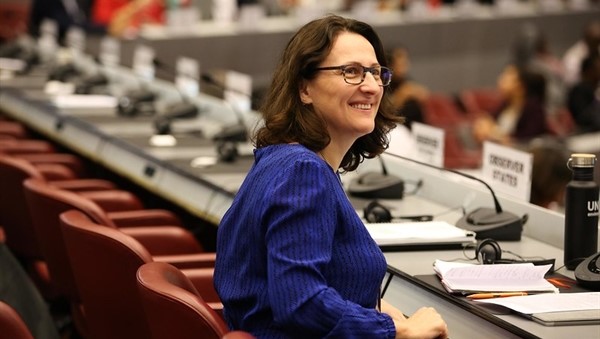The Secretariats of the Basel, Rotterdam, and Stockholm (BRS) Conventions and the Minamata Convention on Mercury published a technical review of literature on climate change and hazardous chemicals management. The review identifies opportunities for addressing the two issues simultaneously. The authors note that interlinkages between climate change and hazardous chemicals management support the case for mobilising resources to combat climate change.

The report, titled “Chemicals, Wastes and Climate Change: Interlinkages and Potential for Coordinated Action”, seeks to guide the development and implementation of cost-effective strategies, institutional capacity, enforcement mechanisms, and other components to address these issues at the global, regional, national, and local levels.
The report was launched on June 4, 2021. Monika Stankiewicz, Executive Secretary of the Minamata Convention, emphasised: “We are witnesses of a vicious circle where climate change increases the releases of hazardous chemicals while being, at the same time, exacerbated by them.”
The report identifies interlinkages between the two issues, including:
- climate change can lead to increased releases of hazardous chemicals;
- chemical production and product usage can lead to increased greenhouse gas (GHG) emissions;
- the waste sector is a potential source of GHG and hazardous chemical releases;
- both synergies and sometimes trade-offs can exist between mitigation measures for releases of GHGs and hazardous chemicals; and
- opportunities exist for aligning GHG and hazardous chemicals inventories.
The authors explain that secondary releases of hazardous chemicals from environmental reservoirs such as soil and glaciers will increase from climate change. Increased concentrations of some persistent organic pollutants (POPs) are being observed in the Arctic and have been attributed to warming and retreating of sea ice and melting of glaciers.
In addition, mercury emissions are expected to increase from permafrost regions due to climate change. Climate change can also lead to hazardous chemical releases due to disruptions at mine sites, tailing dams and other infrastructure. Infrastructure therefore must be resilient to climate impacts.
The report also notes the need to manage hazardous materials from renewable energy installations to ensure end-of-life products do not enter the waste stream, as well as household waste and hazardous health care waste, which require facilities for proper disposal.
The report also discusses: reducing coal use, which will lead to decreased GHG, mercury, and other hazardous chemical releases; the cement sector and possible mitigation options; production of metals from recycled material; artisanal and small-scale gold mining and reducing exposure to mercury by mine workers; and impacts of plastic waste on climate change.
The authors also caution that some mitigation options (for reducing GHG emissions) can lead to an increase in hazardous chemicals production and/or release, resulting in a trade-off between GHG and hazardous chemicals mitigation.
On potential synergies in compiling emissions inventories, the report highlights that available inventory guidelines for GHGs, POPs, mercury, and other pollutants have some commonalities, particularly with respect to activity data requirement. It calls for exploiting such commonalities to enable efficiencies in data collection, which could be coordinated by establishing national and regional data management systems for common data.
The report argues that further relevant information and data should be generated on links between climate change and hazardous chemicals, in such areas as groundwater, freshwater systems, pesticide usage projections, and desertification.
